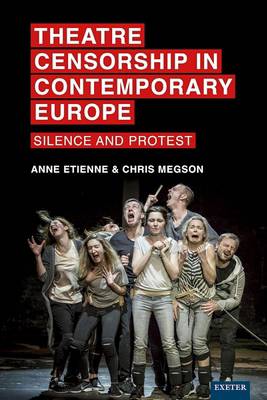
- Afhalen na 1 uur in een winkel met voorraad
- Gratis thuislevering in België vanaf € 30
- Ruim aanbod met 7 miljoen producten
- Afhalen na 1 uur in een winkel met voorraad
- Gratis thuislevering in België vanaf € 30
- Ruim aanbod met 7 miljoen producten
Zoeken
Theatre Censorship in Contemporary Europe
Silence and Protest
€ 215,95
+ 431 punten
Omschrijving
What are the contexts (political, social, legal, cultural) of theatre censorship in twenty-first-century Europe? Given the abolition of state-sanctioned and institutional forms of stage censorship in the late twentieth century, the prevalence of authoritarian and populist politics, and the escalation of so-called 'culture wars', in what ways and to what extent does stage censorship manifest and proliferate today? How does censorship respond (or not) to governmental, economic, moral, and religious circumstances? And how have theatre-makers in Europe contested or countered censorial prohibitions in the recent past? This edited collection is the first pan-European study of contemporary theatre censorship. An international range of scholars assess how new forms of censorship operate to silence artists and control performances; they explore how theatre artists respond to constraints placed upon their work across territories, and analyse how age-old political, religious, and moral taboos impact on theatrical creation and reception. Readers are invited to consider not only the varied mechanisms of censorship, including its more covert iterations, but also what is censored, when, how, and why, particularly in relation to the sensitive issues of religion, race, sexuality, and nationalism. By focusing on the work of key European theatre practitioners, as well as significant productions and performances, contributors reflect on the impact of censorship on artistic policies and cultural activity, and the forms of protest mobilized against it.
Specificaties
Betrokkenen
- Uitgeverij:
Inhoud
- Aantal bladzijden:
- 266
- Taal:
- Engels
- Reeks:
Eigenschappen
- Productcode (EAN):
- 9781804130513
- Verschijningsdatum:
- 23/01/2024
- Uitvoering:
- Hardcover
- Formaat:
- Genaaid
- Afmetingen:
- 156 mm x 234 mm
- Gewicht:
- 585 g

Alleen bij Standaard Boekhandel
+ 431 punten op je klantenkaart van Standaard Boekhandel
Beoordelingen
We publiceren alleen reviews die voldoen aan de voorwaarden voor reviews. Bekijk onze voorwaarden voor reviews.







